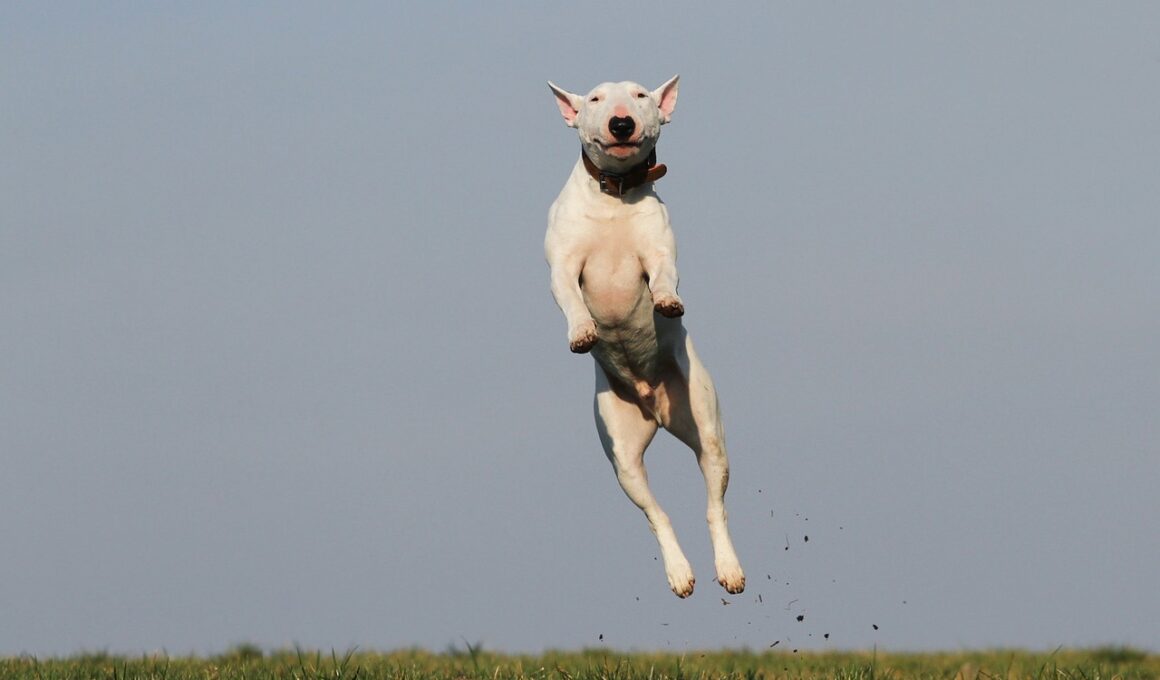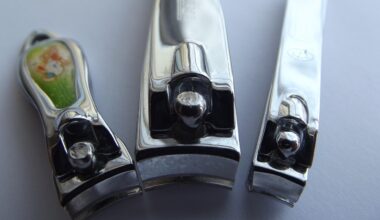Using Distractions Wisely to Redirect Jumping Behavior in Dogs
Jumping is a common behavioral issue many dog owners face, particularly welcoming guests or greeting family members. This behavior can often be charming, but it becomes a problem when dogs jump on people indiscriminately. It’s important to recognize that dogs will jump to seek attention, express excitement, or react to perceived threats. To address this behavior effectively, one must employ distractions strategically. Using distractions involves redirecting the dog’s energy and attention away from jumping. This can be achieved by providing an alternative focus, such as a favorite toy or treat. This redirection must be consistent and practiced daily so your dog learns the appropriate time to remain grounded. Owners should utilize interactive toys as distractions when guests arrive. This keeps the dog occupied and reduces their urge to jump. Consistent use of distractions creates an environment where the dog feels engaged and settled. This approach not only helps mitigate jumping but also forms a foundation of trust and clear communication between the dog and owner, promoting a lasting behavioral change.
As effective as distractions can be, it’s vital to integrate other positive reinforcement techniques alongside this approach. Each time your dog refrains from jumping upon greeting someone, reward them immediately with a treat or praise. This reinforces the desired behavior and demonstrates to your dog that staying calm garners positive reactions. For instance, if visitors come to the house, you might instruct them to wait at the door calmly instead of encouraging the dog to jump for attention. Allowing the dog to see their guests calmly while remaining on the ground is crucial. Learning to build excitement without jumping takes time and patience. Ensure to reward your dog for sitting or staying calm when visitors approach. Generally, consistency in this process yields the best results, so maintaining a structured approach to visitors will assist in training your pup effectively. Additionally, this can be a learning experience for both the dog and the people. Educate guests on how to interact with the dog without encouraging jumping. Every effort counts, helping the dog associate peace and calmness with positive outcomes.
Utilizing Clicker Training for Distractions
Clicker training is an invaluable tool to assist in redirecting a dog’s jumping behavior. This technique allows for clear communication between owner and dog, linking the action of not jumping to a reward. The sound of the clicker, when timed correctly, marks the completion of a desired behavior. To implement this method, start by having your dog on a leash and have guests enter your space. Should your dog jump, you can gently pull them back while clicking when all four paws are on the floor. Then, immediately reward with a treat. This process must be repeated until the dog understands that keeping their paws down leads to positive reinforcement. Over time, the sound of the clicker becomes associated with good behavior. Identify points of distraction and use the clicker to guide your dog back to calmness. It may also be beneficial to teach alternative behaviors like sitting when welcoming guests; this can divert the jumping urge. Furthermore, consistency should be prioritized, so all family members follow the same clicker training approach to ensure a steady learning curve.
An alternative way to reduce jumping is through engaging in interactive activities before guests arrive. A good way to do this is by taking your dog for a walk, playing fetch, or engaging in fun games that tire them out. Keeping your dog’s energy in check allows them to be more relaxed when visitors are present. This preemptive approach allows the dog to burn off excess energy, making it easier to control jumping urges during moments of excitement. After a vigorous play session, your dog is likely to be in a calmer state of mind, and thus less inclined to jump. Ensuring these sessions are engaging and enjoyable can help in reducing their excitement levels in social settings. Additionally, consider providing stimulating chew toys or puzzle toys during guest visits. These engage not just their physical needs but also their mental capacity, keeping them occupied when your focus is elsewhere. A mentally stimulated dog is less likely to resort to jumping behavior out of boredom or excitement. Adopting a routine centered on pre-visit activities can create a more serene environment for social interactions.
Socialization and Consistency
Socialization plays a critical role in effectively managing jumping behavior. Dogs that are well-socialized from a young age tend to display better manners in social situations. Regularly exposing your dog to different environments, people, and situations helps them feel less anxious and more confident. This aspect of training can significantly reduce unwarranted jumping. Utilize diverse settings, engaging other dog owners or friends with calm dogs. Agree upon introducing your dog in controlled environments where they can interact without causing chaos. Consistency in socialization routines is key to producing sensible dogs. Over time, they will learn the appropriate behaviors to exhibit when greeting people. For instance, when meeting people, allow your pup to observe before engaging them to ensure grounded behavior. Reinforce their calm demeanor with treats or praises, further linking calmness with enjoyable outcomes. Indeed, regular outings and controlled interactions will gradually help diminish jumping impulses. It also aids in developing positive associations with various social interactions, resulting in a better-mannered pet who understands how to behave effectively around others.
Moreover, establishing a command such as “off” or “down” can significantly assist in reducing jumping behavior. When your dog jumps upon greeting someone, reinforcing this command by practicing it frequently can redirect their focus. Start by using the command when the dog is already in a calm state, integrating it into their daily routine. The goal is to teach the dog that following the command will be rewarded. When your dog begins to understand the command’s importance, they can respond instead of jumping. This requires consistency in your corrections and rewards. Be patient and understanding, as learning does not happen overnight. Over time, the command will become second nature, allowing your dog to understand what is expected of them. Additionally, practice using this command with distractions around—like during home parties or family gatherings. Reinforcing this too during high-energy events further enables your dog to learn appropriate behaviors in various contexts. This multitiered strategy fosters respect for personal space, both for your dog and the visitors, cultivating a peaceful interaction environment.
Celebrating Small Wins
Lastly, acknowledging and celebrating small victories fosters emotional bonds between you and your pet, creating a deeper understanding of training tactics. If your dog manages to refrain from jumping during a visit, genuinely praise them for their efforts. Positive reinforcement can motivate dogs to maintain appropriate behavior in future scenarios. Keeping an enthusiastic yet composed tone when celebrating success encourages growth, allowing the dog to understand their role in meeting expectations. Additionally, you may choose to add another layer of commitment to your dog’s training objectives by tracking improvements over time. Consider maintaining a journal of insights that documents behavioral changes and areas that require extra attention. Reviewing this documentation can illuminate both progress and struggles along the way. The knowledge gained assists in evolving your training strategies. Furthermore, this awareness ensures you keep adapting your approach based on the dog’s response. Over time, these adjustments can yield improved outcomes, empowering both you and your dog to cultivate a peaceful environment when strangers or friends enter your space.
In summary, addressing jumping behaviors in dogs requires a multifaceted approach using distractions wisely, alongside consistent training and socialization efforts. The combination of training techniques, positive reinforcement, and proactive management creates a robust framework for effective learning. Ensure to take the time to understand your dog’s energy levels and their responses to different circumstances. Utilize training aids like clickers to make the message clear and engaging. Incorporating consistent commands helps in redirecting their focus when the urge to jump arises. Moreover, celebrating their progress, no matter how small, cultivates a positive atmosphere and encourages adjustments based on their behavior. Practicing patience throughout this process will produce lasting behavioral improvements. Through this journey, both you and your pup can reinforce a beautiful bond, enhancing the overall relationship. Building a golden rule of treating training as an ongoing process enriches your pet’s experience and results in a more peaceful coexistence. Lifelong training ensures higher adaptability, providing dogs with healthy coping mechanisms in various interactions. As a result, the combination of wisdom, consistency, and commitment leads to well-mannered dogs, resulting in greater harmony in family life.


